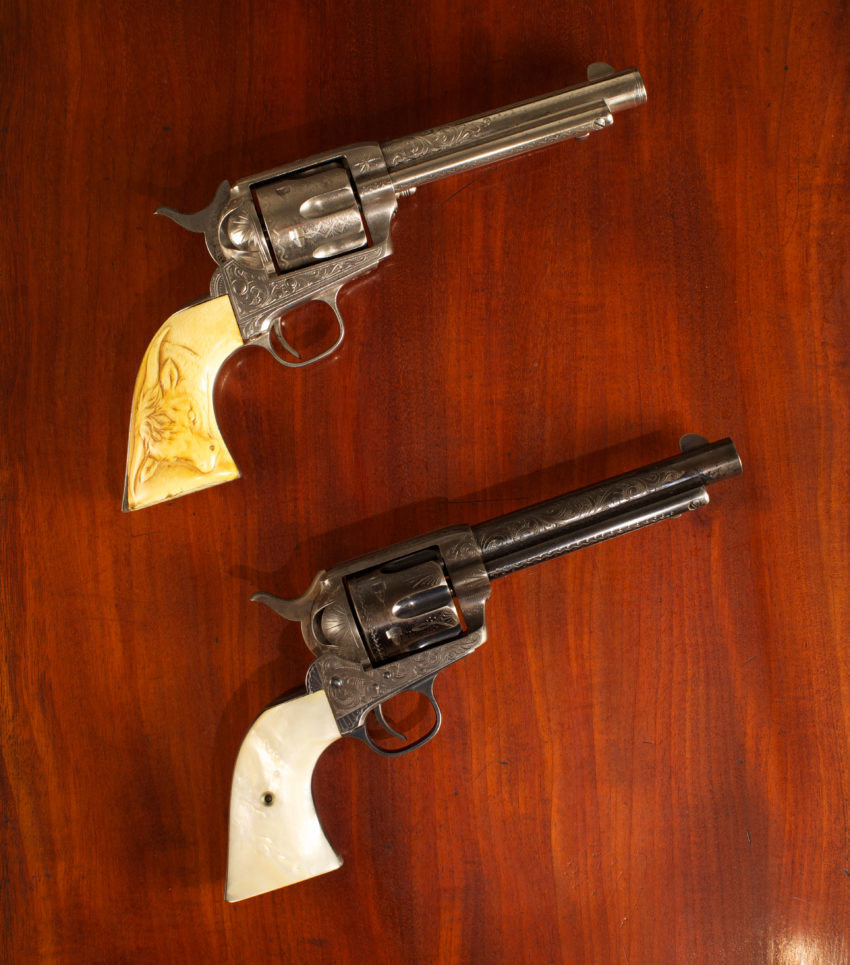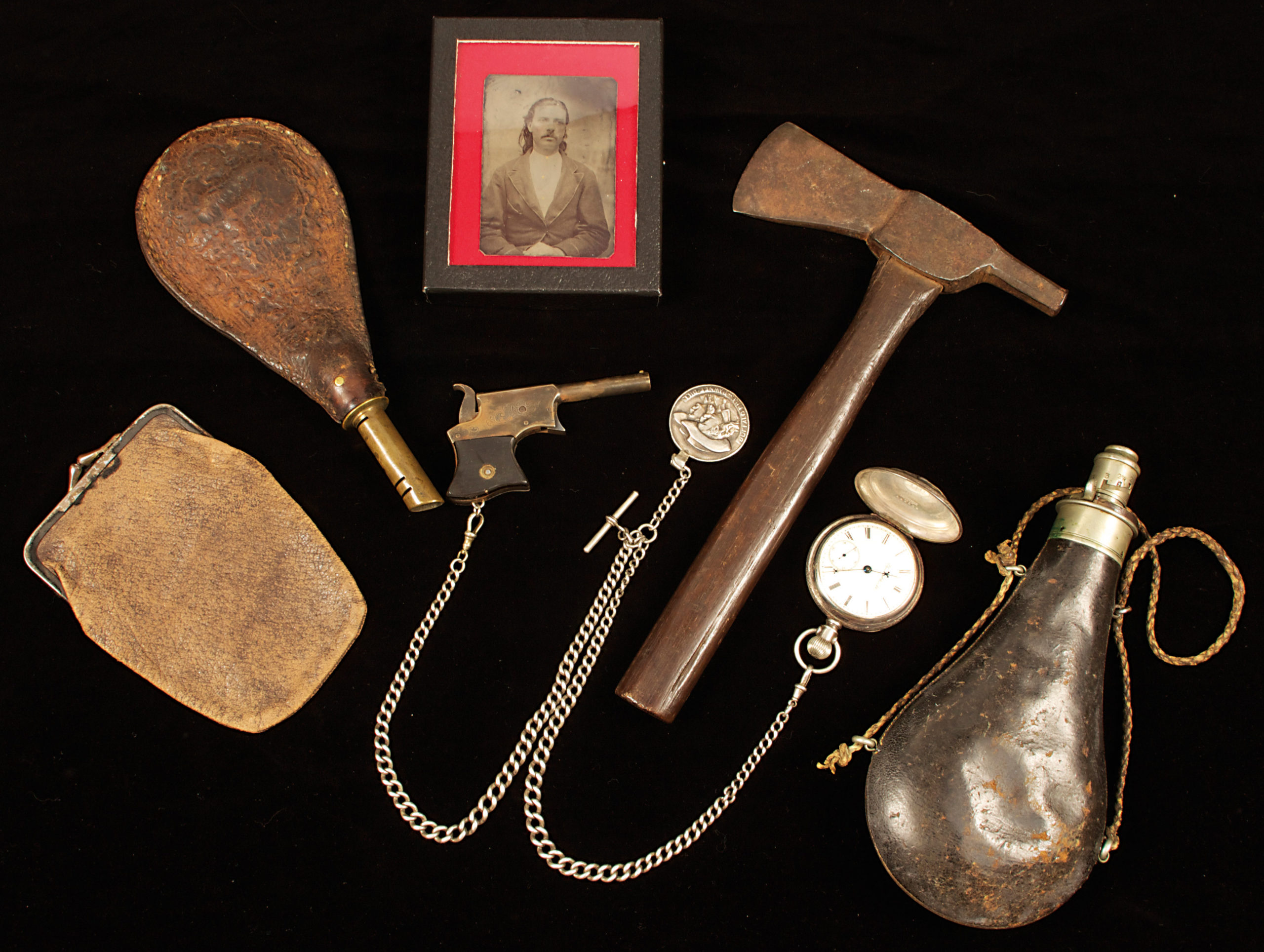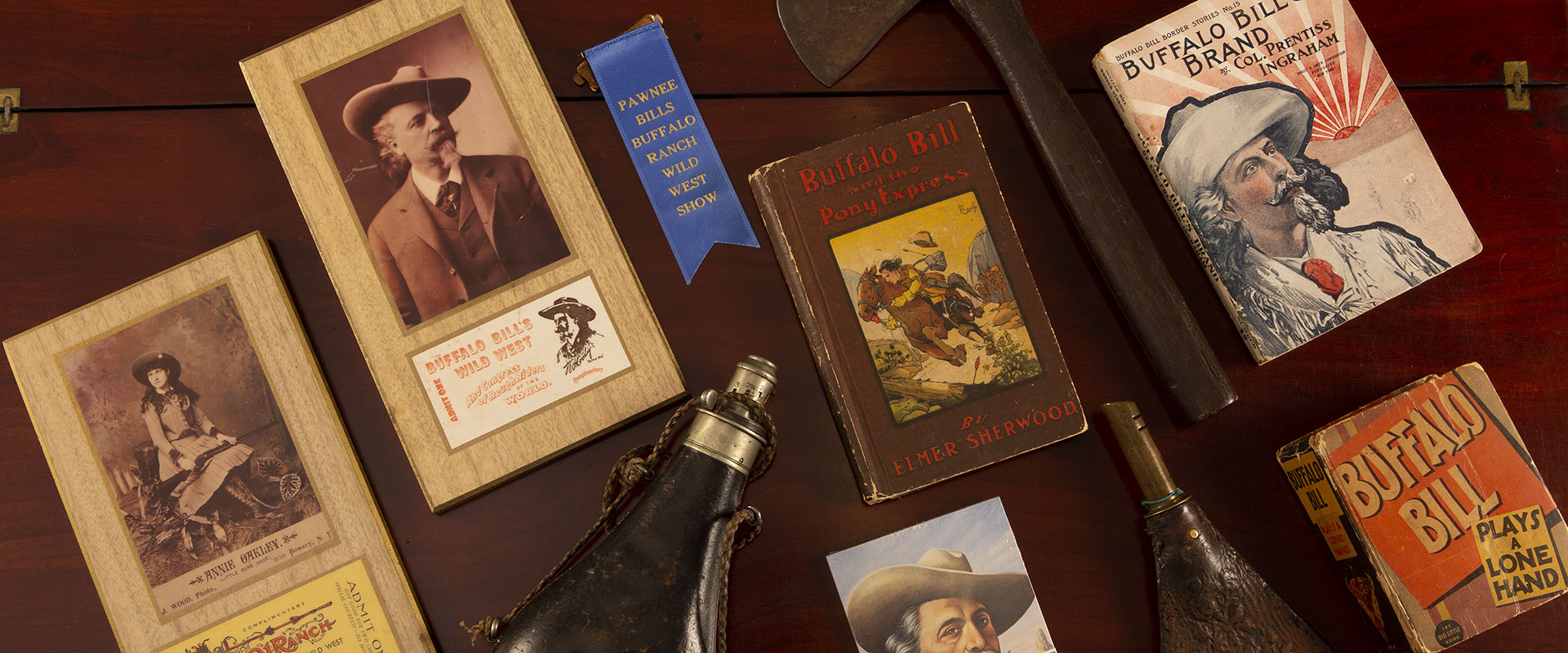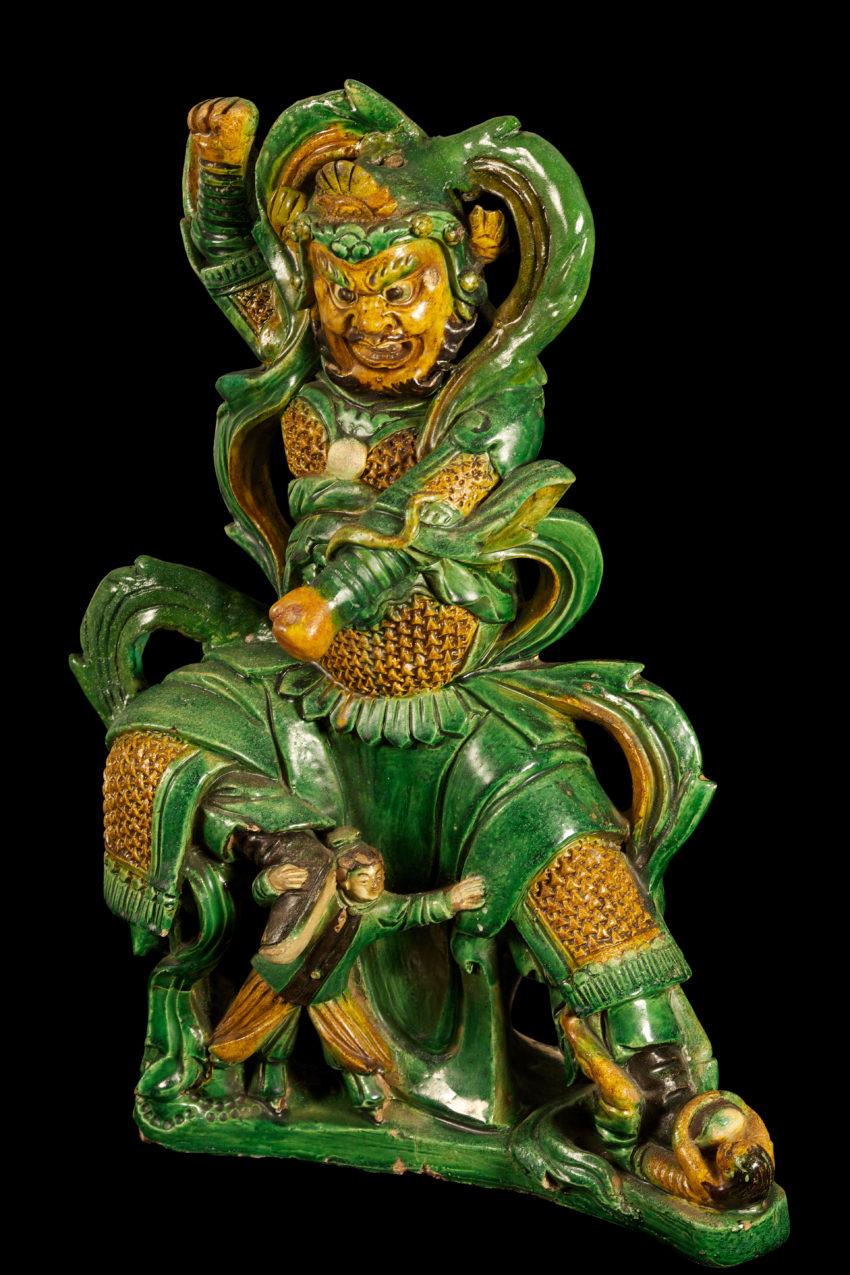This magnificently dramatic figure is a Ming Dynasty Ghost Catcher, whose job it was to capture the ghosts before they bothered the living, and to dispatch the ghosts to the underworld. This dramatic sculpture dates to 1550 CE.

Chinese Figure 300 CE
This rare equestrian figure is from the Wei dynasty, a period when ceramics and other art works were rarely produced. Weapons were the primary items produced during that time (300 CE), making this equestrian “group” phenomenally rare. Note the depiction of leather armor on the horse and the rider.

Bowls
Above, an extremely large Japanese Imari type bowl. On both the interior and exterior, alternating panels of red, blue, and white backgrounds support elaborately decorated motifs. These include chrysanthemums and Japanese junks, as well as delicately added areas of overglaze gold. This bowl was produced in the 19th century. Below, a Large basin with raised…

Chinese Celestial Horse
Han Dynasty model of a celestial horse. This figure has much of the original pigments still in evidence. Made for the tomb of the deceased, this horse would have represented the best of the horses being bred by the Chinese, but enhanced with celestial qualities such as an oversized chest. Produced from 206 BCE-220 CE.

Chinese Neolithic Vessels
These objects were produced approximately 5,000 years ago. Both naturalistic and geometric designs were used to decorate the exterior surfaces. These items were so significant that their placement was often within specially prepared areas of the burial sites.

Wild West Guns
On October 2, 1892, the Dalton Gang attempted to outdo other famed outlaws by robbing two banks in Coffeyville, Kansas. Among the personal arsenal the gang brought to the occasion were 10 specially ordered, pearl-gripped single-action .45-caliber Colt pistols. The Pamplin Collection owns both Bob and Frank Dalton’s guns. Among the icons of the American…

Wild West
Newspaper (Sunday Mirror) announcing the 1937 death of Emmett Dalton, the last of the famed Dalton Brothers who robbed the Coffeyville, Kansas, banks in 1892. Emmett survived the shootout, served time in prison, then had a career in the early movies. Photograph of Emmett Dalton, lying wounded, following the raid on the banks in Coffeyville….

The West of lawmen, outlaws, showmen, heroes, and rogues
One of the West’s great iconic artifacts, this pistol belonged to Bob Dalton at the time he attempted the famous Coffeyville, Kansas, bank robbery. On October 5, 1892, Dalton and other members of his gang stormed the C.M. Condon & Company’s Bank and the First National Bank in Coffeyville. Members of the town responded with…

Western
Buffalo rifles, the legendary “Big Gun” on the northern Plains. The weight and length of the barrels provided supreme accuracy and killing power. These were the types of guns that nearly extinguished the great buffalo herds in the 1880s and 1890s. The painting of Sioux buffalo hunters, The Hunters, show hunters using a lance and…

Revolutionary War
Virginia Cherry Stocked American Pistol, 1776. An all-American made pistol with “Liberty Cap” engraved on the trigger guard. Made at the Rappahannock Forge in present day Harper’s Ferry at the outset of the American Revolution. A large, company size Revolutionary War canteen dated “AH – 1779” (possibly the owner’s initials), with original red paint, iron…



